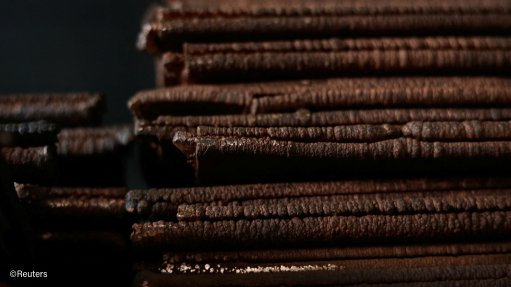Analyst sees renewables as only practical way to quickly boost South Africa's electricity generation
Regarding increasing South Africa’s electricity generating capacity in the immediate future, wind, solar photovoltaic (PV) and hybrid power systems were the “only game in town”, affirmed EE Business Intelligence MD Chris Yelland on Monday. He was addressing the Energy Indaba conference in Cape Town.
He pointed out that national electricity utility Eskom had about 100 generators (of different types) and that their availability had been declining for 15 years. Their current availability was about 56% or 57%. President Cyril Ramaphosa‘s desire to significantly increase this over the next two years was “physically impossible”, especially as Eskom had no reserve generating capacity. The long-term maintenance needed to increase availability would require further capacity to be taken offline, thereby worsening availability over the next couple of years!
Far from increasing availability, the best Eskom could achieve would be to keep availability at its current levels. But that would require new generation capacity to be built, quickly. That, in turn, required private investment. However, the government did not move fast enough to timeously approve such private investments. Government public procurement processes were too slow. He highlighted that not one of the projects in the fifth bid window of the country’s Renewable Independent Power Producer Procurement Programme had yet achieved financial closure. And, once that had been achieved, they still had to be built.
Nevertheless, a lot was still happening, especially with solar PV. Microgrids were being set up all over the country, to reduce (not eliminate) dependence on grid electricity generated by Eskom. South African mining companies were planning lots of solar PV installations, as, indeed, were a number of municipalities. Rooftop solar PV arrays could be deployed in large numbers. There was a lot that businesses and the public could do, provided they received the appropriate tax incentives. “Loadshedding should not be accepted, and should not become the normal, for South Africa,” he affirmed.
As for other energy sources, he noted that power stations which employed natural gas could be built within two years. The problem was that the country would need to source most, if not all, the gas, probably in liquid natural gas (LNG) form, from outside the country. But South Africa currently had no LNG import, storage and distribution infrastructure: it would all have to be built, which would take at least five years. And LNG prices were volatile and currently were very high.
“There will be no new coal [powered power stations] in South Africa,” he asserted. “It’s over. No one will fund it.” (China will fund new coal projects within China, but not in other countries.) The South African government had to recognise that concern over climate change was a major issue and so a major driver and trend regarding energy technologies.
Large-scale nuclear power was capital intensive, took a long time to build, and was not flexible. No small modular nuclear reactor (SMRs) design had yet been licensed, but they could not be ruled out as a longer-term (ten plus years) option. South Africa, he advised, should wait and watch as SMR technology was developed and deployed.
Comments
Press Office
Announcements
What's On
Subscribe to improve your user experience...
Option 1 (equivalent of R125 a month):
Receive a weekly copy of Creamer Media's Engineering News & Mining Weekly magazine
(print copy for those in South Africa and e-magazine for those outside of South Africa)
Receive daily email newsletters
Access to full search results
Access archive of magazine back copies
Access to Projects in Progress
Access to ONE Research Report of your choice in PDF format
Option 2 (equivalent of R375 a month):
All benefits from Option 1
PLUS
Access to Creamer Media's Research Channel Africa for ALL Research Reports, in PDF format, on various industrial and mining sectors
including Electricity; Water; Energy Transition; Hydrogen; Roads, Rail and Ports; Coal; Gold; Platinum; Battery Metals; etc.
Already a subscriber?
Forgotten your password?
Receive weekly copy of Creamer Media's Engineering News & Mining Weekly magazine (print copy for those in South Africa and e-magazine for those outside of South Africa)
➕
Recieve daily email newsletters
➕
Access to full search results
➕
Access archive of magazine back copies
➕
Access to Projects in Progress
➕
Access to ONE Research Report of your choice in PDF format
RESEARCH CHANNEL AFRICA
R4500 (equivalent of R375 a month)
SUBSCRIBEAll benefits from Option 1
➕
Access to Creamer Media's Research Channel Africa for ALL Research Reports on various industrial and mining sectors, in PDF format, including on:
Electricity
➕
Water
➕
Energy Transition
➕
Hydrogen
➕
Roads, Rail and Ports
➕
Coal
➕
Gold
➕
Platinum
➕
Battery Metals
➕
etc.
Receive all benefits from Option 1 or Option 2 delivered to numerous people at your company
➕
Multiple User names and Passwords for simultaneous log-ins
➕
Intranet integration access to all in your organisation


















